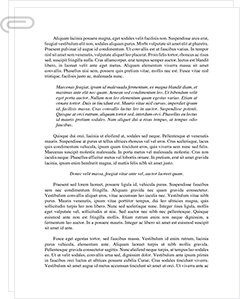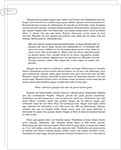 Study Document
Study Document
Policies and Evaluation Term Paper
Pages:4 (1324 words)
Sources:4
Subject:Law
Topic:Patient Advocacy
Document Type:Term Paper
Document:#72120976
Policy Process: Evaluation, Analysis and Revision
The National Nursing Shortage Reform and Patient Advocacy Act was designed to address the public health workforce shortage that is seen, especially where nurses are concerned. It is no secret that nurses are leaving the profession in record numbers, and as they do that it is becoming more and more difficult to replace them with others who want to do the same type of work (Buerhaus & Retchin, 2013; Iglehart, 2013). Because of all the nurses retiring, and so many of them experiencing burnout, the gap between the number of needed nurses and those who are available continues to widen (Negron & Cohen, 2013). The issue here is how that Act becomes a policy, so it can provide more help to a public health workforce that is struggling. In order for the Act to become a policy, it must first be evaluated. The Act discussed here was introduced to the Senate in April of 2013, and has been read twice (S.739, 2014). It was then referred to the Committee on Health, Education, Labor, and Pensions (S.739, 2014). Since then, no further action has been taken on it.
Evaluation
The lack of action in Congress does not mean that nothing is happening to the Act. The Act must go through a process to help ensure it is ready to be passed, and to have the highest chance of getting through the Senate when it is voted on. Then it must also pass the House, and only then can it have a chance of becoming law. So many bills "die" in the House or the Senate because they are not acceptable to both sides of Congress, or because they have riders or other bills attached to them that stop them from going through. The Act will be evaluated for all of these things. It is based on legislation that required better nurse-to-patient staffing ratios, and focuses on that same type of issue (Buerhaus & Retchin, 2013). There are too many patients and not enough nurses to safely and properly care for them (Buerhaus & Retchin, 2013). While the Act is about nurses, it is actually about patients, in that it is designed to bring more nurses into the field to care for all the patients who are already there and who will be there in the future (Buerhaus & Retchin, 2013).
Analysis
After the thorough evaluation the Act receives, it will then be moved into the analysis stage, where anything that could prevent it from moving forward will be discussed and acknowledged (Iglehart, 2013). If there were serious problems that could stop the Act from advancing, they could be caught in the analysis stage and adjusted. Factors that allow the policy to meet objectives also have to be considered, in order to determine the overall strength of the policy. Currently, the policy is still with the committee to which it was assigned in April of 2013 (S.739, 2014). The government's bill tracker site shows that it has a 0% chance of being passed. However, that addresses its chances when it comes to how it was originally introduced. Work is being done on the Act in committee to provide it with a better chance of passing. An analysis of the Act shows that it would require strict patient to nurse ratios throughout all hospitals (Buerhaus & Retchin, 2013).
There would be consequences for those who did not keep these ratios, and that could cost these hospitals funding and other needs items that would be very important to them (Iglehart, 2013). With that in mind, hospitals oppose these kinds of bills, because they force the hospitals into different staffing plans than they currently have, and impose upon them something that is based only on a numbers game (Buerhaus & Retchin, 2013). This makes many hospitals uncomfortable, and is likely why similar bills introduced in 2009 and 2011 died in committee and did not advance through Congress (Buerhaus & Retchin, 2013).…
Sample Source(s) Used
References
Buerhaus, P.I., & Retchin, S.M. (2013). The dormant National Health Care Workforce Commission needs congressional funding to fulfill its promise. Health Affairs, 32(11), 2021-2024.
Iglehart, J.K. (2013). Expanding the role of advanced nurse practitioners - risks and rewards. New England Journal of Medicine, 368(20), 1935-1941.
Negron, B., & Cohen, E. (2013). Back to the future: A standardized approach to delivering effective nursing care. Nurse Leader, 11(2), 52-56.
S.739 (2014). Congress.gov. Retrieved from https://beta.congress.gov/bill/113th-congress/senate-bill/739
Related Documents
 Study Document
Study Document
Policy Evaluation
Policy Evaluation of the Non-Experimental Evaluation Design Approach in Education
A program can be described as a set of activities that are coordinated and run in tandem over a significant period, and aimed at delivering a specified outcome to a client/s. The terms: policy, strategy, initiative, intervention and project are often interchangeably used with the word program. Programs are discrete funded activities that are different from the usual daily
 Study Document
Study Document
Policy Evaluation in Forgotten Australians:
One of the important elements of those recommendations is that care leavers be given open and free access to their own records (Australian Senate, 2004). They also suggest that the government establish counseling for care leavers and their families to deal with the impact of life in care, including specialized education for mental health professionals so that they are in a position for dealing with this problem (Australian Senate,
 Study Document
Study Document
The Extent to Which Group Policy Evaluation Vs. Individual Evaluation Differ...
Problems That Arise When Groups are Categorized as Individuals
The difficulty of determining the extent to which group policy evaluation vs. individual evaluations differ is that context is the deciding factor, and contextual factors are always shifting. Therefore, a case by case analysis is required rather than a one size fits all universal evaluation. As Briggs and Helms (2015) explain, there are actors and roles and the inputs and outputs
 Study Document
Study Document
Policy Studies the Study of Public Policy
Policy Studies The study of public policy gained significant importance in the late fifties and sixties. However, policy science did not come into existence all of a sudden. It started to emerge when social scientists started researches on a wide range of sociopolitical problems. After the World War II, significant developments were made in the areas of operations research, economics and social psychology. These developments proved to be helpful in formulating
 Study Document
Study Document
Policy Options for Reducing Youth Involvement in Gangs in Low Income Areas...
POLICY Youth and Gangs in Low Income AreasThis assignment is based on Burgess� concentric model, which divides urban centers into five zones that differ by income levels and distance from the central business district (Allen et al., 2005). Gang activity is more prominent in the �loop� (the CBD), the transition zone, which is characterized by low incomes and slum conditions, and the factory zone, which is dominated by factories and
 Study Document
Study Document
Policy Analysis Compassion Fatigue and Quality of
Policy Analysis Compassion Fatigue and Quality of Care: A Policy Analysis Nurses enter their profession in hopes of a rewarding and fulfilling career caring for those in need. However, many of them do not realize the stress that can accumulate by caring for those who need them the most. Long-term stress as a caregiver can lead to a condition known as compassion fatigue. This form of burnout affects caregivers in every area



